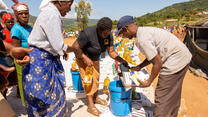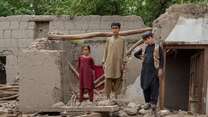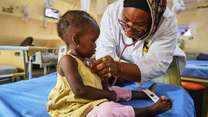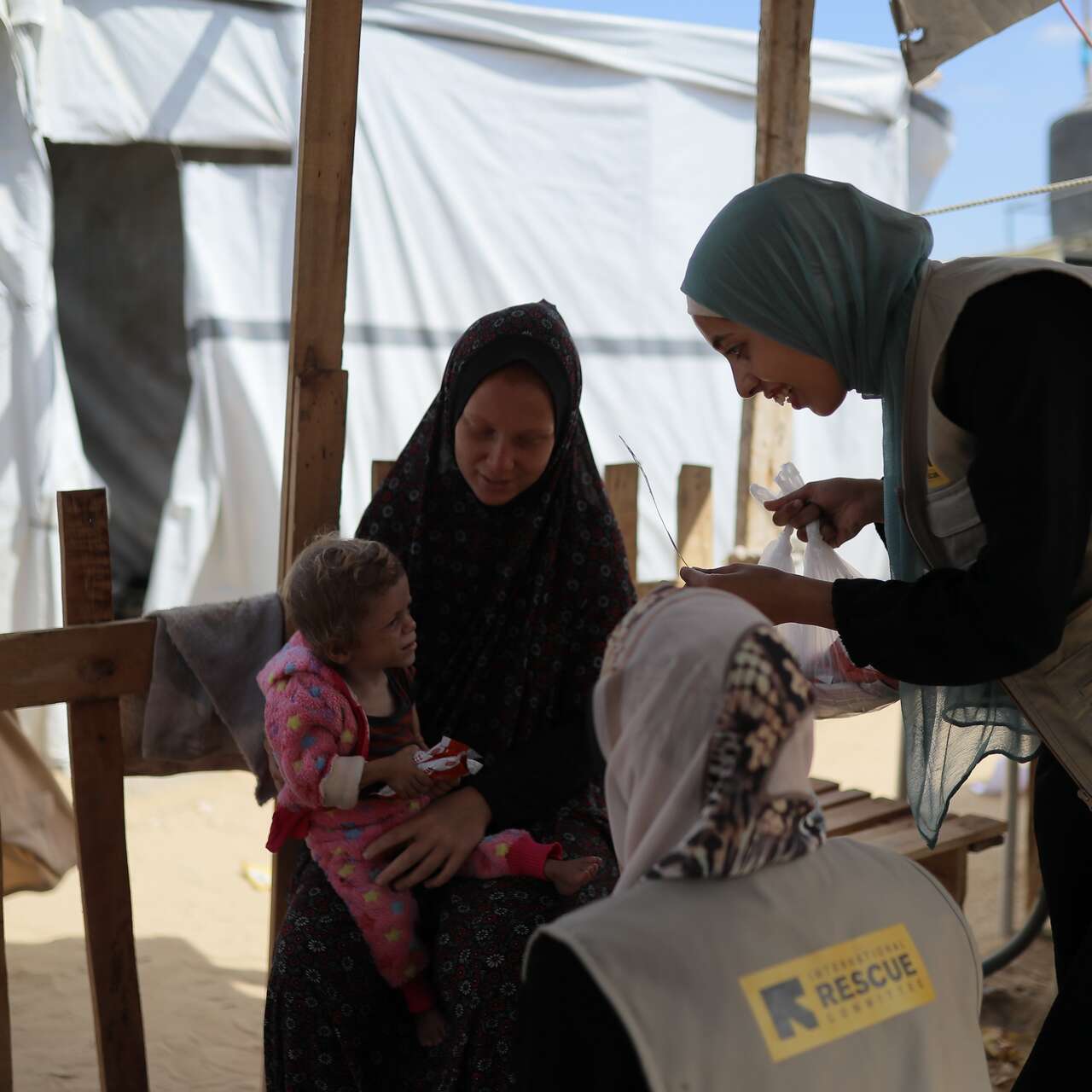
In this article:
- What constitutes an emergency response?
- How does the IRC help in an emergency?
- How to help in an emergency?
When disasters strike—whether natural catastrophes, armed conflicts or mass displacement—the International Rescue Committee (IRC) mobilizes within hours. With operations spanning more than 40 countries and throughout the United States, our teams deliver critical, life-saving assistance to communities facing some of the world's most devastating crises.
Today's humanitarian landscape is unprecedented. Over 123 million people worldwide have been uprooted by conflict and disaster. Modern conflicts last longer and grow increasingly complex, with civilian populations bearing the heaviest burden.
Against this challenging backdrop, the IRC must make difficult decisions about where and how to respond. Here's how we approach these critical choices.
What does the IRC consider an emergency?
The IRC defines emergencies as "emerging humanitarian crises or deteriorating situations in which existing services are overwhelmed and communities' access to basic needs are unmet."
Emergencies take many forms, from sudden-onset disasters like the Russian invasion of Ukraine or the 2025 Myanmar earthquake, to slow-developing crises such as the prolonged hunger crisis in East Africa. What unites them is the urgent need for humanitarian intervention.
Preparing for the unexpected
Our emergency response doesn't begin when disaster strikes. Instead, it's built on continuous preparedness.
Each year, the IRC publishes the Emergency Watchlist, a ranking of the 20 humanitarian situations most at risk of deteriorating worldwide. We work closely with our program teams in each of the countries on the Watchlist to develop detailed contingency plans and to ensure our global emergency specialists (doctors, engineers, social workers and logisticians) are on standby and ready to deploy within 72 hours. Flexible funding from our supporters and the Crisis Response Fund allows us to mobilize quickly and effectively when disaster strikes.
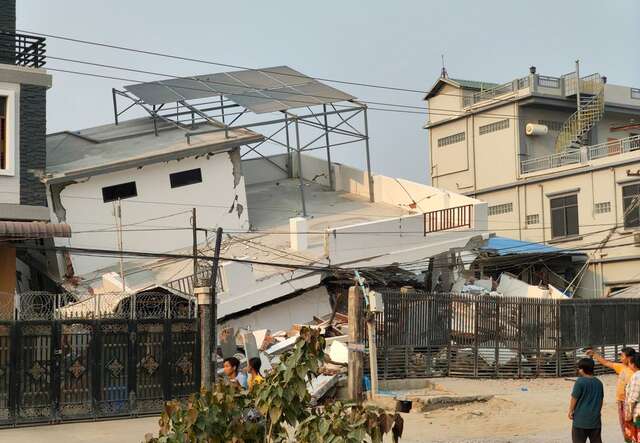
How does the IRC decide what aid to provide?
Our emergency team follows a straightforward approach that can be summarized as: We ask communities about their needs, we listen carefully to their responses, and then we act based on their priorities and feedback.
Decades of experience have taught our emergency team that imposing external knowledge and values during a crisis often results in ineffective interventions. When aid efforts fail to align with local priorities, they struggle to gain community support, deliver meaningful impact, or save lives. Truly effective humanitarian responses rely on understanding and addressing the genuine needs identified by the affected communities themselves.
We also rely on information from IRC colleagues already working in affected countries.. Ninety-nine percent of staff in each of our country programs come from those countries and serve their own communities. During a crisis, they work alongside the emergency team and provide critical local insights.
Where the IRC doesn’t already have a presence in a country, we talk to communities and to groups that may include local nonprofits and government officials. We try to get up to speed on needs as quickly as possible while also moving rapidly to provide vital aid.
Often, the IRC partners with and provides support to local organizations already active on the ground. This bolsters the crisis response of people who have already been working in the community and are experts on the local context.
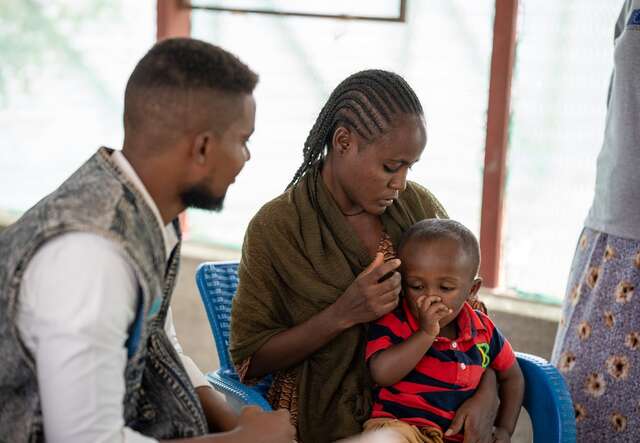
Core emergency response services
The IRC provides comprehensive humanitarian assistance through various key service areas, each designed to address critical aspects of emergency response. Our integrated approach ensures communities receive immediate relief while building foundations for recovery.
Rapid deployment within 72 hours
When disaster strikes, our emergency teams mobilize within 72 hours, providing essential supplies including clean water, hygiene kits, and emergency cash assistance—giving families the dignity to choose how to meet their most urgent needs.
Emergency health care
Our mobile clinics deliver critical medical services when local health systems are inaccessible. Services include maternal and child health care, treatment for infectious diseases, mental health support, vaccination campaigns, and disease prevention through hygiene promotion.
Economic recovery support
Crises often destroy livelihoods overnight. We help communities recover through emergency cash transfers, market support programs, and skills training that help people rebuild their economic foundations.
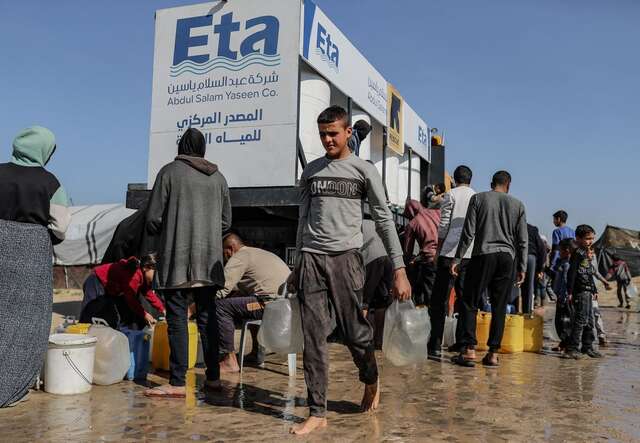
Protection for vulnerable populations
Emergencies disproportionately endanger women, children, and marginalized groups. We establish safe spaces, reunite separated families and provide specialized support for survivors of violence and exploitation.
Building long-term resilience
Beyond immediate response, we help communities prepare for future emergencies through preparedness training, anticipatory action programs and climate adaptation support. We invest in local partnerships to strengthen long-term response capacity.
How to help
The most effective way to support the IRC's emergency response work is through financial donations. Cash contributions allow us to:
- Respond flexibly to changing needs
- Source supplies locally, supporting affected economies
- Deploy resources precisely where they're most needed
The IRC's ability to respond quickly to emergencies depends on supporters worldwide. Your donations ensure we can meet immediate needs while supporting long-term recovery. Together, we help communities survive, recover and build resilient futures.

